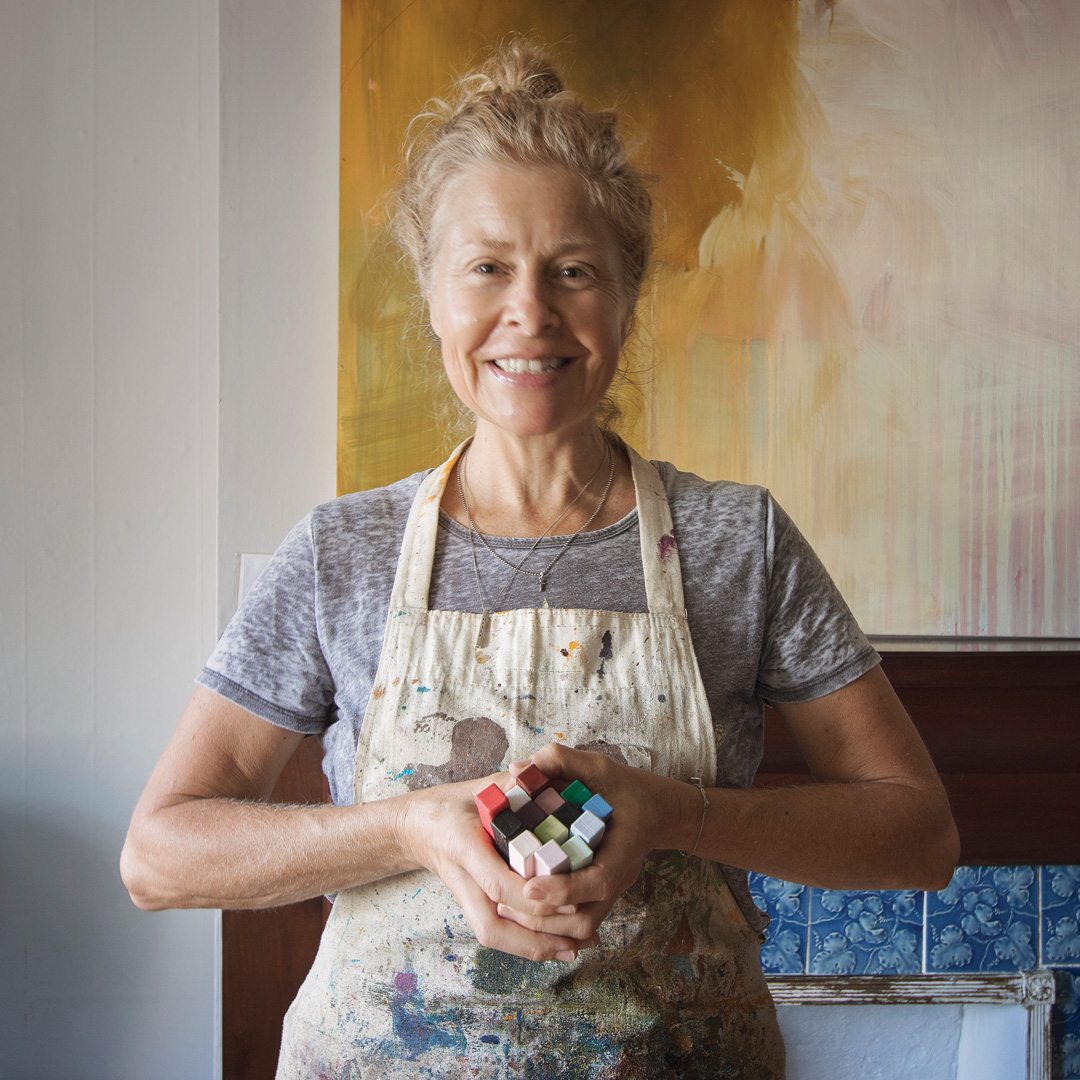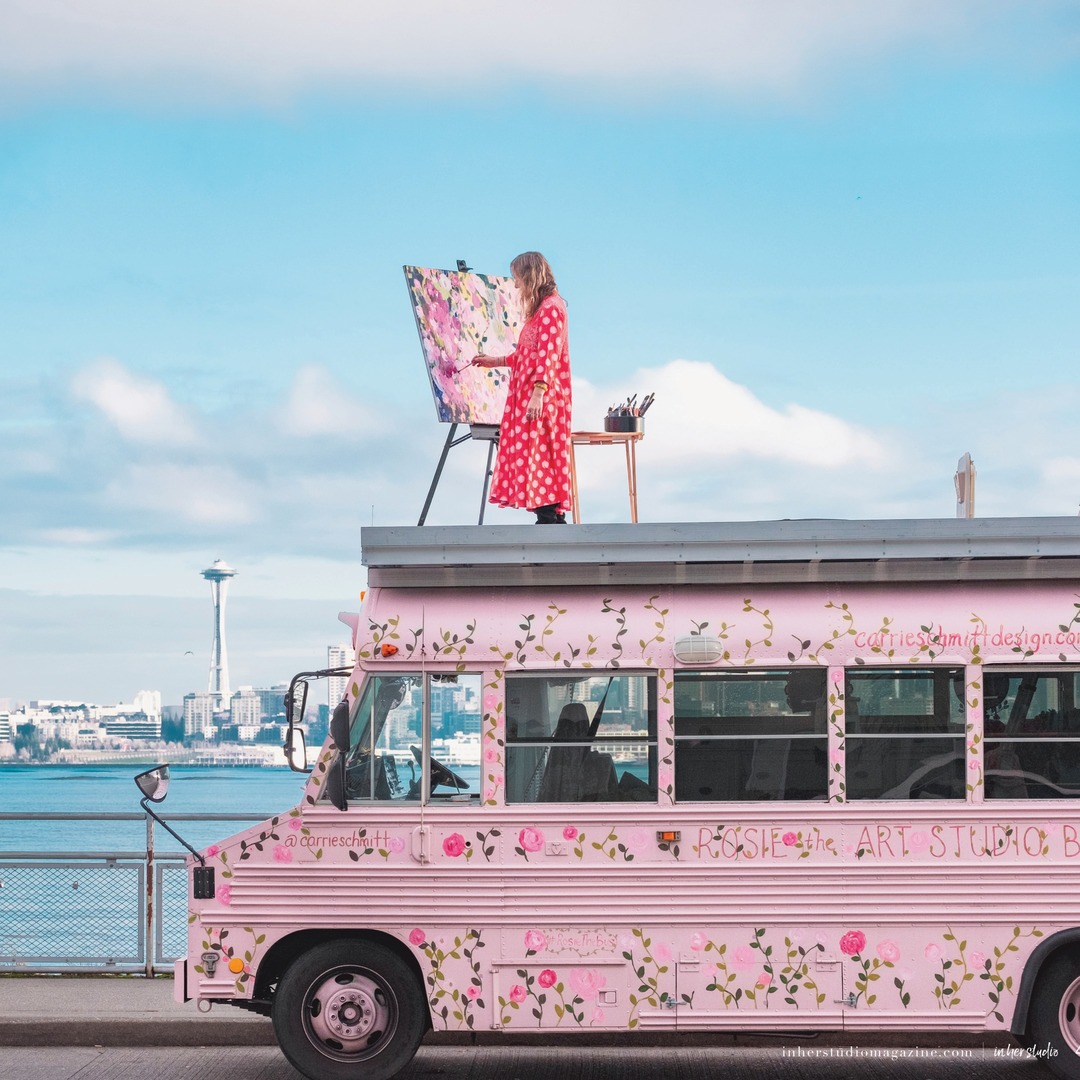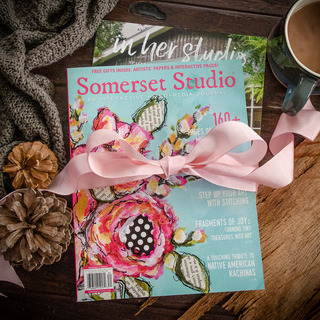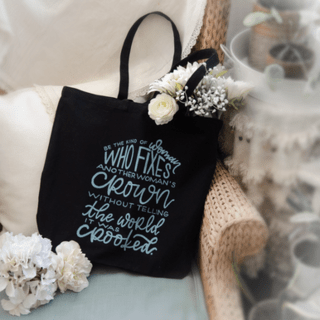
Creative Flow: What It Is and How to Tap Into It
Feb 20th 2024
"The self expands through acts of self-forgetfulness." – Mihály Csíkszentmihályi. At some point, most of us have experienced the creative flow state, wherein we're so engaged in the moment that we lose track of time. This state of flow can nonetheless be quite elusive. Even with effort, getting into it proves challenging at times. Read on to learn more about creative flow and how you can enter it more often.
What Is Creative Flow?
Creative flow, referred to as being "in the groove" or "in the zone," is a mental state in which you experience a deep sense of immersion in what you're doing. Time seems to slip away. Self-conscious thoughts diminish while concentration heightens. And you feel a seamless connection between your actions and sense of self.
This artistic flow is not limited to any particular discipline or medium. It can manifest during painting, art journaling, crafting, cooking, and coding – you name it. It's a state of optimal experience where your skill level matches the challenge of the task at hand, resulting in a sense of effortlessness and satisfaction.
The History of Creative Flow
Throughout history, artists, writers, and thinkers have sought ways to access this elusive state of heightened creativity. From the Renaissance luminaries to the Romantic poets, anecdotes and accounts abound of individuals experiencing moments of intense creative immersion. However, it wasn't until the 1970s that psychologist Mihaly Csikszentmihalyi's work brought this phenomenon into the spotlight, coining the term "flow" in his book "Flow: The Psychology of Optimal Experience."
JENNY GRANT⎟ IN HER STUDIO SPRING 2024
Characteristics of Creative Flow
Several key characteristics define the flow state.
Ego Transcendence
One of the most profound aspects of creative flow is ego transcendence. As you enter the flow, the ego fades into the background, allowing you to act freely and authentically without self-criticism, doubt, or fear of judgment. This liberation from self-conscious thoughts gives way to creative freedom, spontaneity, and uninhibited expression.
Complete Involvement
In this state, distractions fade away, and your attention becomes fully absorbed by the creative process. You feel completely immersed in your work, with a heightened awareness of every detail and nuance. This unwavering focus, in turn, leads to more productivity and creativity.
Effortless Creativity
Ideas seem to flow effortlessly, and your creative output reaches a quality that may surprise even you. The process becomes more intuitive, and you trust your instincts. As a result, you experience a sense of ease and fluidity in your actions, with little resistance or friction impeding your progress.
Delve into stories of artists harnessing the creative flow state in our In Her Studio magazine.
Timelessness
Hours can feel like minutes when you're in a state of artistic flow. The distortion of time is a hallmark characteristic and a common occurrence, with many saying they're surprised by how much time has passed during a creative session.
Intrinsic Motivation
Joy and satisfaction accompany creative flow, as what you do becomes inherently rewarding, and the journey becomes as fulfilling as the outcome. External rewards and validation are no longer primary concerns. The creative process, because of that, becomes deeply meaningful.
PATRICIA BALDWIN SEGGEBRUCH⎟ IN HER STUDIO SPRING 2019
How to Get Into Creative Flow
Now that you understand more about creative flow, the crucial question emerges: How can you intentionally tap into this state to elevate your creative potential?
1. Set Clear Goals
To truly immerse yourself in the creative process, it's essential to have a clear understanding of why you're engaging in it and what you hope to achieve. Take some time to reflect on your creative goals and the deeper purpose behind your work. Are you seeking self-expression, personal growth, or perhaps to communicate a specific message or emotion? By defining your goals and purpose, you can maintain focus and momentum throughout the creative process.
2. Find the Right Balance
Achieving creative flow requires striking the right balance between skill and challenge. If the task is too difficult, you may feel frustrated and overwhelmed. Conversely, if it's easy, you may become disengaged and bored. So, you should adjust the difficulty of your tasks to match your current capabilities. As you grow, gradually push yourself outside your comfort zone without overwhelming yourself.
Read about how artists tap into the creative flow state in our In Her Studio magazine.
3. Eliminate Distractions
Distractions can derail your focus, preventing you from getting into creative flow. Create a conducive environment for creativity by taking steps to minimize distractions. These steps could be turning off notifications on your devices, finding a quiet space free from interruptions, or establishing boundaries with others. As you create a dedicated time and space for your creative pursuits, you signal your brain to enter a state of heightened concentration.
4. Cultivate Mindfulness
Mindfulness practices are instrumental in nurturing the awareness and presence vital for accessing the flow state. Engage in mindfulness techniques like meditation, body scanning, or deep breathing to bring your attention to the present moment.
By becoming more attuned to your bodily sensations, thoughts, and emotions, you can develop better focus, clarity, and receptivity to creative inspiration. Incorporate mindfulness into your daily routine, and notice how it improves your ability to enter artistic flow.
CARRIE SCHMITT⎟ IN HER STUDIO SPRING 2019
5 Experiment and Play
Approach your work with curiosity, experimentation, and playfulness. Allow yourself to explore new ideas, techniques, and approaches without fear of judgment or perfectionism. As you search for novel solutions and insights, make mistakes, take risks, and deviate from conventional norms.
Engage in creative exercises such as art journaling, doodling, or free writing to stimulate your imagination and break out of mental ruts. By fostering a sense of play and openness in your creative practice, you can invite inspiration to flow freely and spontaneously.
6. Embrace a Growth Mindset
Fear of failure can hinder you from getting into the flow, as it can create self-doubt and inhibit creative experimentation. To overcome this obstacle, adopt a growth mindset that celebrates trial and error. Reframe failures as opportunities for growth and a natural part of the creative process.
7. Take Breaks
Recognize the importance of rest in maintaining creative flow over the long term. Don't push yourself too hard or work for extended periods without taking breaks. Instead, prioritize self-care. It's perfectly acceptable to step away from your creative work when needed.
Take short breaks throughout your creative sessions to rest your mind, stretch your body, and recharge your energy. A 20-minute break every 90 minutes helps prevent burnout.
8. Establish a Routine
Like any skill, creativity requires dedication and practice to develop. Set aside dedicated time for creative activities on a regular basis, even when you don't feel inspired. Consistency is key. By consistently putting in the work, you create the conditions for creativity to flourish.
Remember, creative flow is a dynamic and individual experience. What works for one person may not work for another. That's why it's essential to explore different approaches and techniques. Check out our magazines for creative inspiration and prompts to help you get into the flow.







